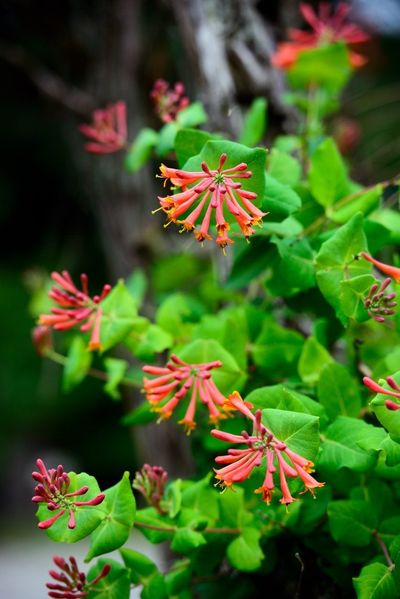Coral Honeysuckle Info
What is coral honeysuckle? Depending upon whom you ask, coral honeysuckle (Lonicera sempervirens) is hardy in everything from USDA zone 4 through 11. This means it can survive virtually anywhere in the continental United States. Coral honeysuckle is a twining vine that can reach 15 to 25 feet (4.5-7.5 m.) in length. It produces attractive and fragrant trumpet-shaped flowers that grow in clusters. These flowers are 1 to 2 inches (2.5-5 cm.) long and come in shades of red, yellow, and coral pink. They are especially attractive to hummingbirds and butterflies. In the fall, these flowers give way to small red berries that will attract songbirds.
Is Coral Honeysuckle Invasive?
Honeysuckle gets a bad rap, and rightly so! Japanese honeysuckle is an especially invasive species in North America that is often planted without knowledge of how harmful it can be to local ecosystems. While that species should be avoided in the United States, coral honeysuckle is a native plant that has a place in the carefully balanced ecosystem. It is a good alternative to its dangerously invasive cousin.
Coral Honeysuckle Care
Growing coral honeysuckle vines is not difficult. The plant can grow in full sun to partial shade. Once established, it is very tolerant of both heat and drought. In very warm climates, the leaves are evergreen. In places with colder winters, the leaves will drop or some growth will die back. Coral honeysuckle will grow as a vine up trellises or along fences, but it can also be used effectively as a creeping groundcover.
